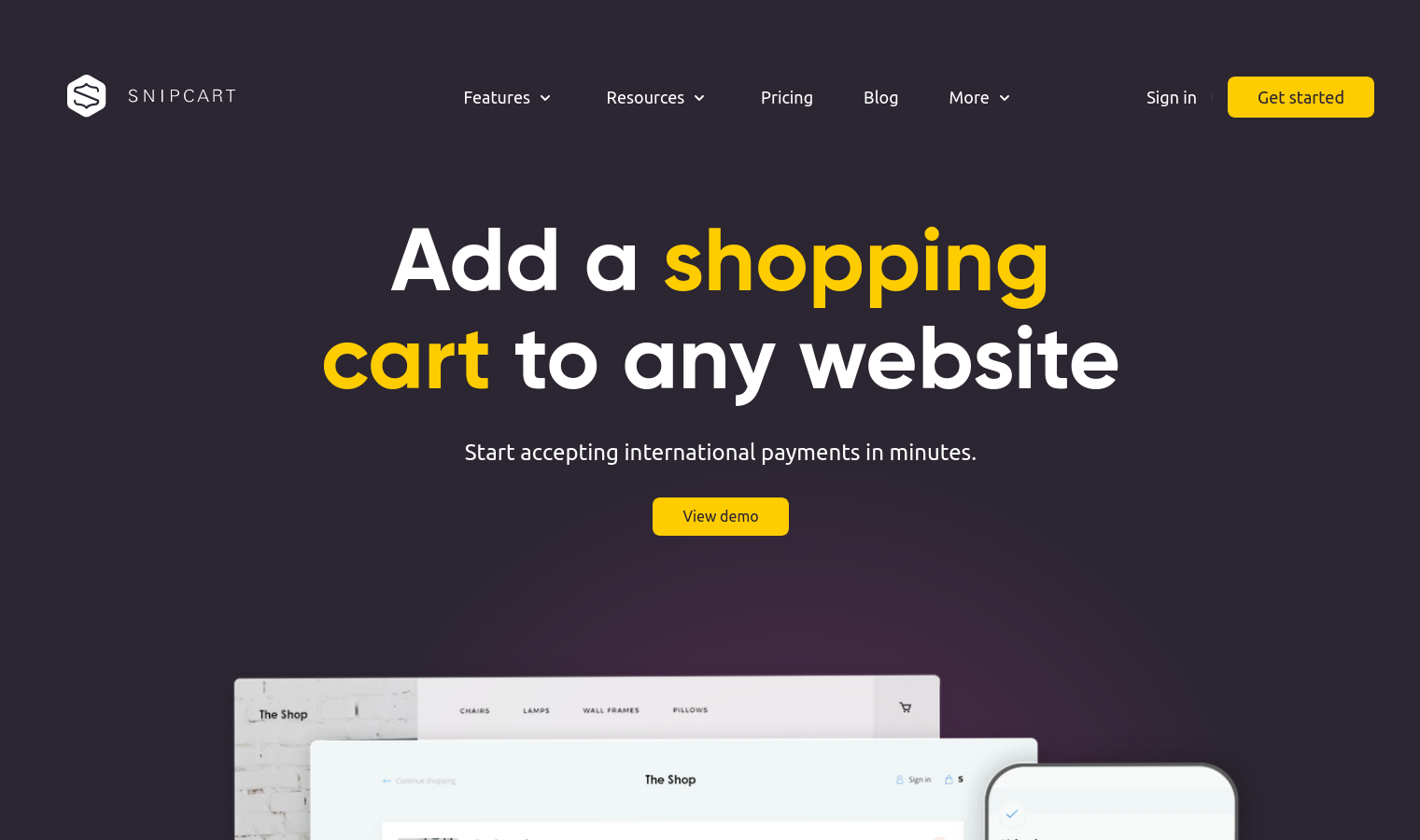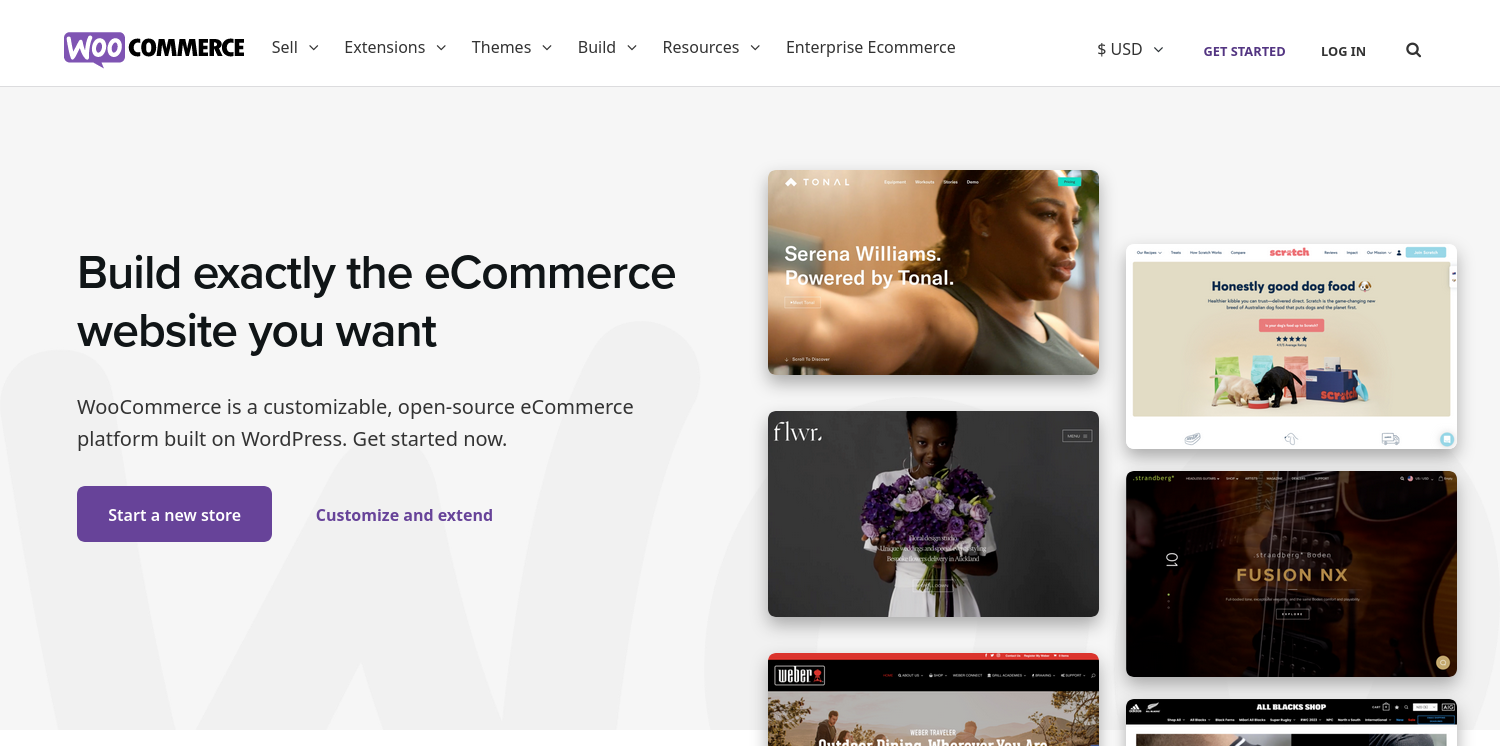JAMStack eCommerce In 2023: Solutions, Tips & Code Examples
The increasing accessibility of online shopping has led to a more competitive marketplace for vendors: you can't afford sloppy shopping experiences in 2023 like slow loading times and poor security without putting your brand under great existential risks. JAMStack eCommerce is the solution to these problematics, and it's here to stay.
If you're looking to build or switch an ecommerce website to JAMStack, you'll need to pick an eCommerce solution that suits your business needs. In this article, we'll cover 5 types of JAMStack eCommerce solutions―each with their distinct pros and cons―as well as some tips and code examples to help you pick one for your next project.
What's JAMStack eCommerce
JAMStack eCommerce refers to the modern approach to building and hosting online stores using Javascript, APIs, and markup languages: the user interface of a JAMStack eCommerce site is built using JavaScript, APIs connect the UI to various third-party services like payment gateways or databases, and the information is rendered as HTML, CSS, or Markdown markup languages to structure and style the site.
JAMStack eCommerce is also referred as headless ecommerce, because it separates the frontend (the face of the website, the user interface) from the backend of the site (where products are stored, payments are processed, etc.). This separation brings many benefits when compared to traditional eCommerce websites built on platforms like Wordpress, for example.
Why JAMStack eCommerce
JAMStack eCommerce offers 3 main benefits over traditional eCommerce development methods.
Because frontend and backend are decoupled, JAMStack eCommerce webpages are frequently served as static files. This allows for drastic improvements in scalability, page speed, and running costs: businesses can handle increased traffic and transactions without any downtime, enhancing user experience and increasing conversion rates, while eliminating the need for an expensive server infrastructure.
Taking the JAMStack route also represents a better security guarantee. Since there is little to no need for server-side scripting, the attack surface of the website is greatly reduced: you just need to focus on securing API services. Monitoring and updating JAMStack online shops is trivial, so security vulnerabilities can be mitigated before they ever wreak havoc. There is no vendor lock-in either, because you can switch your eCommerce backend solution with another one fairly easily with minimal work.
Lastly, JAMStack makes programmatic publishing easy, so it's a great choice for marketing strategies like programmatic SEO. Jamstack eCommerce improves SEO because it generates static HTML pages that load faster and are easily indexed and crawled by search engines for increased online visibility.
Comparison Criteria
We are going to use the following criteria to compare each solution:
- Pricing - How much does it cost? Is there a free plan?
- Feature-completeness - What can I do with the tool?
- Distribution model - Is it open source? Is there a self-hosted option?
- Time To Hello World - How fast can you get started?
- Developer Experience - How easy is it to use?
Best JAMStack eCommerce Solutions Summary
- If you want maximum flexibility in terms of pricing and features, Stripe is the way to go.
- Choose Snipcart for a low-cost, low-code solution.
- Shopware is an interesting open-source and self-hosted option.
- For enterprise users, Shopify is a great option.
- WooCommerce is a simple choice for Wordpress users.
Top 5 JAMStack eCommerce Solutions
1. Stripe

Stripe develops software to accept payments and manage online businesses.
Pricing: 2.9% + $0.3 per card charge. No monthly fee.
Features:
- API and SDK
- UI libraries for payment links and subscriptions
- Global payments in 135+ currencies
- Reporting and analytics
- Dispute handling
- Automated tax management
- Marketplace feature to handle several vendors
Pros:
- Leading payment processor
- Great developer documentation
- High quality of service with 24/7 support
- Easy international payments
- High flexibility in terms of features
Cons:
- Not dedicated ecommerce solution per see
Code example:
You can use Stripe's REST API to easily leverage all built-in features using an API key:
curl -G https://api.stripe.com/v1/customers \
-u sk_test_4eC39HqLyjWDarjtT1zdp7dc: \
-d limit=3
Similar solutions: Paddle, Square, Paypal
2. Snipcart

Add a shopping cart to any website in minutes.
Pricing: 2% per transaction + payment gateway fees
Features:
- API, Webhooks, and SDKs
- Merchant dashboard
- Shipping estimates
- Tax management
Pros:
- Built for ecommerce websites
- Low cost and no monthly fee
- Developer friendly with doc for all major frontend frameworks
- Simple solution for small and medium businesses
Cons:
- Needs a payment gateway like Stripe or Paypal to work
- The documentation is not as good as Stripe's
Code example:
Works like Stripe with an API key and HTTP requests:
curl -H "Accept: application/json" \
https://app.snipcart.com/api/customers?offset=0&limit=50&status=confirmed \
-u {API_KEY}:
Snipcart alternatives: Saleor (from $45 per month), Commerce Layer (from $649 per month with free tiers), Crystallize (from $299 per month with free tiers)
3. Shopware

Comprehensive ecommerce solutions for all your B2C and B2B needs.
Pricing: From $600 per month.
Features:
- API
- Enterprise-grade ecommerce solution
- Inventory & order management
Pros:
- Open-source
- Free self-hosted option
- Mature and active open-source ecosystem
- Good documentation
Cons:
- Need to request a demo to get started with the managed option
- Aging tech stack: the core engine is in PHP / Symfony
Code example:
Same API paradigm as Stripe and Snipcart:
curl http://localhost:8000/api/customer -H "Token: Bearer {API_TOKEN}"
Similar solutions: MailChimp Open Commerce (2% transaction fee + Stripe fees)
4. Shopify Plus

A modern SaaS platform for ecommerce enterprise users.
Pricing: From $2000 per month.
Features:
- Headless ecommerce
- Multi-storefront available in 175 countries for international companies
- Tax management, payment processing, and fraud analysis
- Messaging API
Pros:
- Powers $1B+ in annual online revenue for large brands in all industries
- 24/7 support
- SOC2 certified and built-in fraud analysis
- Payment, marketplace, and messaging API all in one
Cons:
- Not self-serve, you need to contact customer support to get started
- Closed-source
Code example:
GET /admin/api/2023-01/customers.json
Similar solutions: BigCommerce (From $29.95 per month and $30 per additional storefront, with 15 day free trial), Adobe Commerce (formerly Magento), Salesforce Commerce Cloud
5. WooCommerce

WooCommerce is a customizable, open-source eCommerce platform built on WordPress. It's a great choice for Wordpress users who want to add an online store to their existing website.
Pricing: Free to use if using an external payment processor. Reasonable transaction fees using WooCommerce Payments, depending on country and payment method (e.g 2.9% + $0.3 per credit card transaction for a US card).
Features:
- REST API, React component library, and Javascript SDK
- Website templates and themes
- High-volume store
Pros:
- Open-source and maintained
- Big user base from Wordpress, powers 27% of all online stores
- Free to use
- Dedicated enterprise solution for high-volume stores
Cons:
- Aged technology stack
- Complex transaction fees
Code example:
WooCommerce is a Wordpress plugin, so you can use the Wordpress REST API to interact with it. Here's an example of how to get a list of customers using the WooCommerce API:
curl https://example.com/wp-json/wc/v3/customers \
-u consumer_key:consumer_secret
Similar solutions: Most ecommerce solutions integrate with Wordpress nowadays, including big names like Shopify, BigCommerce, and Adobe Commerce (Magento). But even though WooCommerce remains the most popular choice for Wordpress users, there is a lot to gain from a more decoupled solutions like Shopify as previously explained.
Ask JAMStack Consulting
JAMStack eCommerce is a game-changer for online shopping, offering businesses the perfect combination of speed, flexibility, security, and affordability. Whether you're just starting out or looking to upgrade your existing ecommerce store, this is the solution you've been looking for. Don't wait any longer and get in touch with us today!
